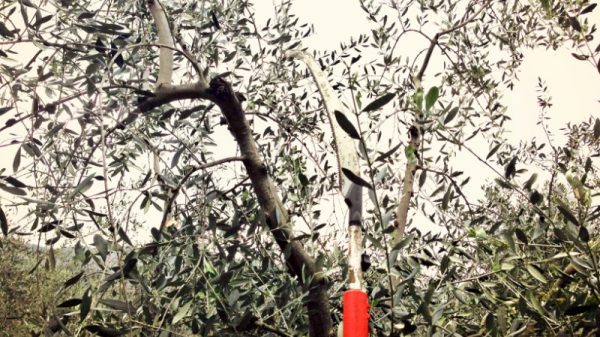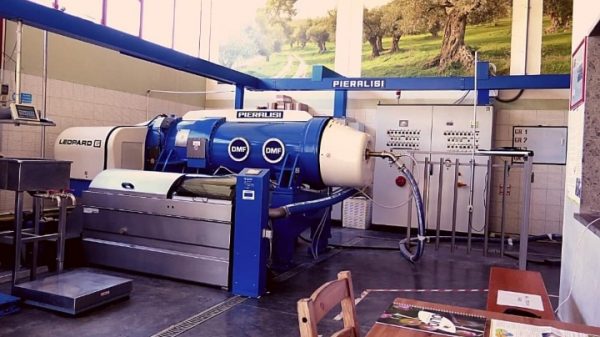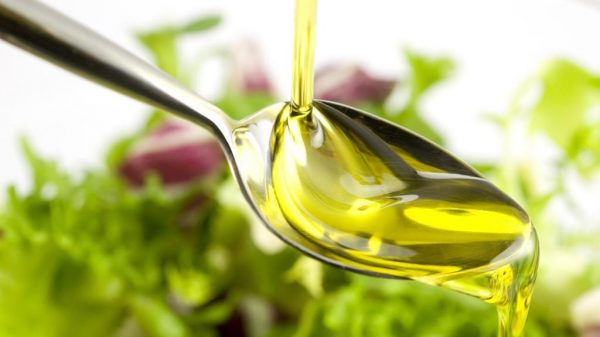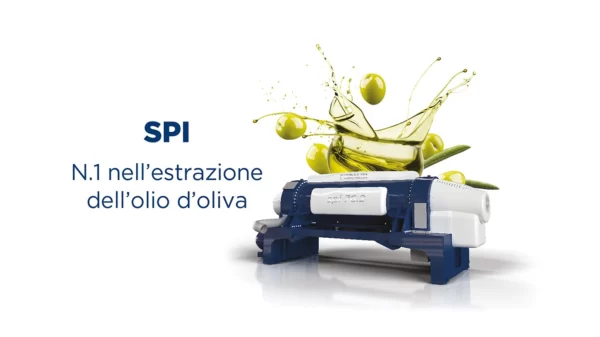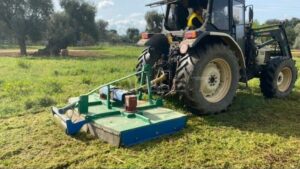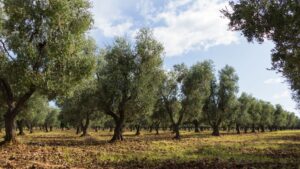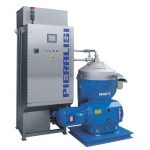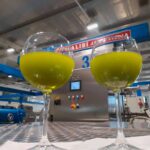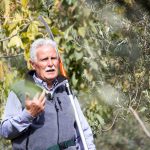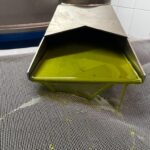 The protective effects of olive oil (EVOO) are also manifested at the level of the genesis of blood thrombus, the training, such as dissolution, it depends on a homeostatic balance between hemostatic factors (13 coagulation factors and platelet function) and fibrinolytic dissolving processes.
The protective effects of olive oil (EVOO) are also manifested at the level of the genesis of blood thrombus, the training, such as dissolution, it depends on a homeostatic balance between hemostatic factors (13 coagulation factors and platelet function) and fibrinolytic dissolving processes.
Thrombogenesis is a positive event when, in the presence of damage to the vessel wall (traumatic wound), the hemostatic plug prevents the blood from escaping. But it becomes a negative event when it forms in the lumen of a vessel and obstructs the passage of blood (therefore its supply of oxygen/nutrients) determining, downstream, an ischemic area of tissue: total (occlusive thrombus), parietal (part of the vessel) or obstruction on the spur of a bifurcation.
Hemothrombogenesis follows some fundamental paths:
1) the intrinsic way, (slow) when the blood comes into contact with a foreign surface from the endothelium that pave the vessels (e.g. walls of a test tube), factor XII is activated which, in turn, with an enzymatic, cascade action, capable of activating a series of factors (FXI, FIX, FX, FII) until the latter, the thrombin (IIa), modifies the fibrinogen (FI) transforming it from a soluble protein, circulating in the plasma, to a fibrin polymer insoluble. The fibrin forms a three-dimensional mesh network, elastic, extensible, adhering to the damaged blood vessel, acting as a hemostatic plug (the so-called fibrin thrombus).
2) the extrinsic way, (fast) is triggered when, following damage (from a wound or detachment of an atherosclerotic plaque), tissue factor (TF), normally incorporated in the plasma membrane of the cells, is released from the tissues and, if it is exposed to the blood can activate the FVII, which in turn, in cascade, acts on the FX, FII, FI factors generating the fibrin thrombus.
3) blood platelets (PLT) circulate passively without adhering to the intact endothelium, but can become activated when there is damage to the lining of the vessels, in the presence of collagen of the subendothelium (it is an aggregating agent) or von Willebrand factor (vWF, adhesion factor) or in the presence of other aggregating agents [thrombin of the extrinsic / intrinsic pathway, oxygen radicals (ROS), adenosine diphosphate (ADP), adrenaline…].
After activation, the PLTs aggregate to form a fragile hemostatic plug, simultaneously releasing substances that determine a contraction of the vessel, to prevent greater blood leakage, and the release of aggregating agents such as thromboxanes (TXA, TXB) and ADPs that amplify the aggregation of other PLTs.
Thromboxane TXA2 comes from the action of the enzyme cyclooxygenase (COX1), normally inhibited by aspirin and phenolic compounds of EVOO (oleocanthal, oleacein).

In the post-prandial period there is a metabolic/hormonal alteration such as an increase in blood sugar, triglycerides and insulin which induce a state of oxidative stress, with ROS production (Reactive Oxygen Species), with a hypercoagulability of blood and one hyperaggregability platelet.
This stress condition is determined by residues of lipoproteins and increases after a meal rich in saturated fats (SFA) while it decreases in the presence of monounsaturated fatty acids (MUFA), such as the oleic contained in EVOO.
Research has confirmed that oleic acid, contained in EVOO, has an antithrombogenic role determined by:
1) decrease in platelet aggregation;
2) decrease in FVII and FVII-activated extrinsic pathway (≈ 50%);
3) inhibition of plasminogen inhibitor (PAI-1) [il plasminogen, when activated, turns into plasmin is physiologically dissolves the clots when they have finished their action; PAI-1, by inhibiting plasminogen, does not allow the dissolving action of plasmin and therefore the restoration of blood flow];
4) decreased platelet aggregation from thromboxanes TXA2 and TXB2 (50%);
5) decrease in platelet adhesion factor such as vWF;
6) decrease in TF activating FVII,
7) reduction of F XII.
On the contrary, the saturated fatty acids, they have a thrombogenic role increasing: platelet aggregation, FVII-activated factor, PAI-I and tissue factor (TF) even up to 56%.
Since both TF and vWF derive mainly from the endothelium, a diet rich in oleic acid also has a protective effect towards vascular function.
In EVOO we have, with anti-thrombogenic activity, i polyphenols, in particular hydroxytyrosol and derivatives, capable of decreasing the thromboxanes TXA2 and TXB2 (from 20% to 50%), both in the fasting and post-prandial phase, the FVII and platelet aggregation, the latter with a action similar to aspirin.
Other components of EVOO, bioactive on thrombogenesis, are quercetin (flavonoid) and isochromanes which inhibit platelet aggregation.
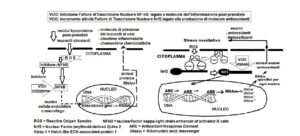
Le omics investigations have shown that oxygen radicals (ROS), related to postprandial oxidative stress, activate the nuclear transcription NF-kB (Nuclear Factor kappa-Light-Chain-Enhancer of Activated B Cells) as they are capable of degrading, by proteolysis, the I-kB inhibitor with which NF-kB itself is complexed.
Free NF-kB migrates into the cell nucleus, induces the transcription of genes for adhesion molecules (of cells to the vascular wall), inflammatory cytokines (among these interleukin IL6 stimulates the production of all the proteins of the acute inflammatory phase) and chemotactic chemokines that attract monocytes from the blood.
Oleic acid inhibits NF-kB activity reducing the production of adhesion molecules which would bring the white blood cells to the point of inflammation which, in turn, would produce inflammatory, oxidizing substances (ROS) and some cytokines with inflammatory activity.
Always there omics techniques have demonstrated that the antioxidant and anti-inflammatory action of EVOO is linked to polyphenols which, through the nuclear transcription factor Nrf2 pathway, increase the production of antioxidant and detoxifying enzymes.
In conclusion, the diet, when supplemented with EVOO, induces a down regulation of the marker humoral and cellular inflammatory and thrombogenic types, especially in the post-prandial period, a moment in which the activation of prothrombogenic phenomena (F VII and PLT) can lead to the pathogenesis of important vascular events.
The action of MUFA and polyphenols in EVOO, integrates synergistically. Post-prandial oxidative stress is also counteracted by other interventions in addition to EVOO, such as the intake of tomatoes (carotenoids), raspberries, strawberries, avocados, physical exercises and lipid-lowering drugs (fibrates and statins).
For subjects with risk factors for cardiovascular diseases (diabetes mellitus, hypertension, dyslipemia, obesity) as well as inadequate lifestyles (smoking, physical inactivity, inadequate diet) it is of fundamental importance that they follow the Mediterranean Diet with the exclusive use of EVOO with a high percentage of oleic acid and polyphenols, limiting the use of saturated fats.
REFERENCES
Vujovic A. 2020. Olive oil between history and science. Tozzuolo Editore, Perugia. Chap 17.7 pg 360 and chap. 17.31 pages. 441.
Vujovic A. 1983. Fibrinogen and its products. Italian biologists, 13, 15-21.
Azambuja Lopesde Souza P.et al. 2017, Effect of olive oil phenolic compounds on inflammation in the prevention and treatment of coronary artery disease. Nutrients, 9 (10),1087; doi: 10.3390/nu9101087
Rigacci S. et al. 2016. Nutraceutical properties of olive oil polyphenols. Int. J.Mol.Sci.17 (6), 843; doi:10.3390/ijms17060843
Marijke A. de Vries et al. 2014, The postprandial situation as a pro-inflammatory condition. Clin. Invest. Arterioscl.;26:184-92; doi: 10.1016/j.arteri.2014.02.007
Delgado-Lista J. et al. 2011, Olive oil and haemostasis: platelet function, thrombogenesis and fibrinolysis. Current Pharm. Design ,17,778-85; doi174/138161211795428876
Lopez-Miranda J, et al. 2010, Olive oil and health: Summary of the II International Conference on olive oil and health consensus report, Jaen and Cordoba (Spain) 2008, Nutr. Metab. Cardiovascular Dis. 20:284-94; doi:10.1016/j.numecd.2009.12.007.
Pérez-Jiménez 2006, Olive oil and haemostasis: a review on its healthy effects. Public. Health Nutr. Dec; 9(8A):1083-8. Doi: 10.1017/S1368980007668566
Alexander Vujovic. A drop of extra virgin olive oil to prevent the risk of blood clots. TN, 18/05/2018.



